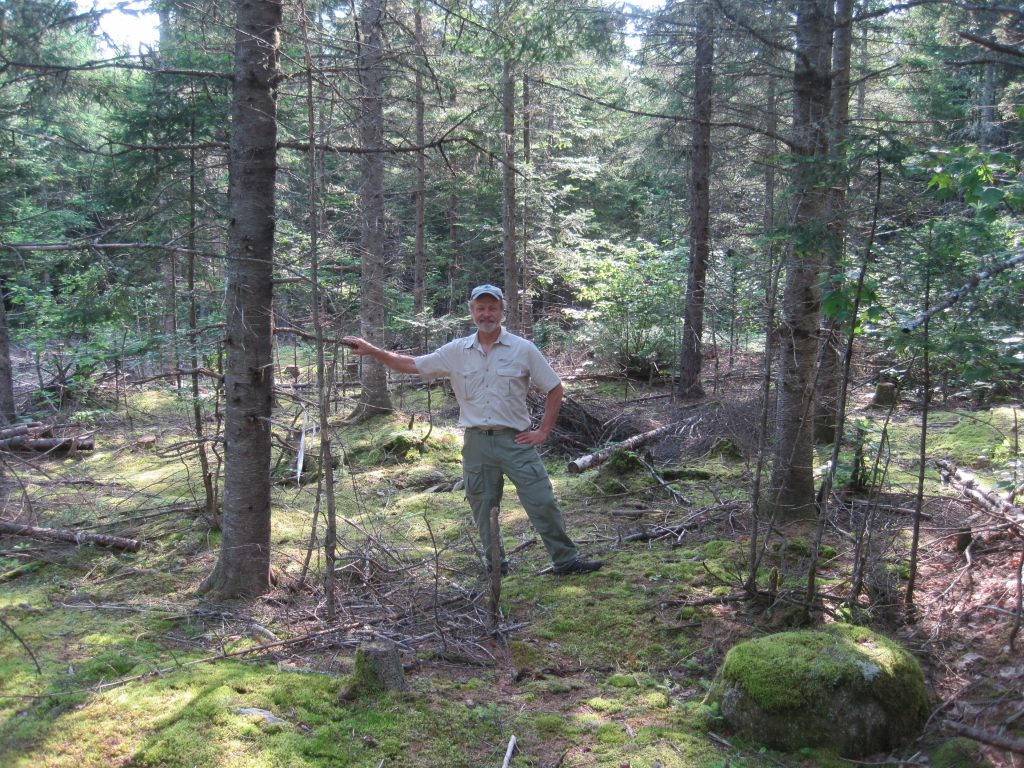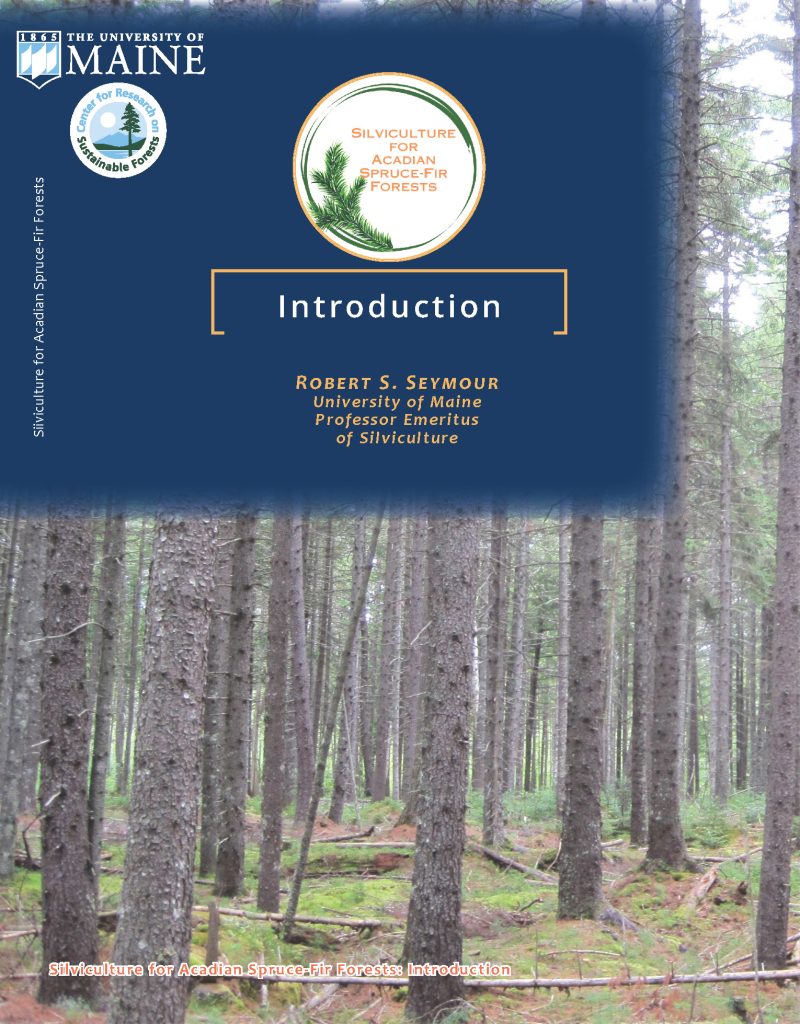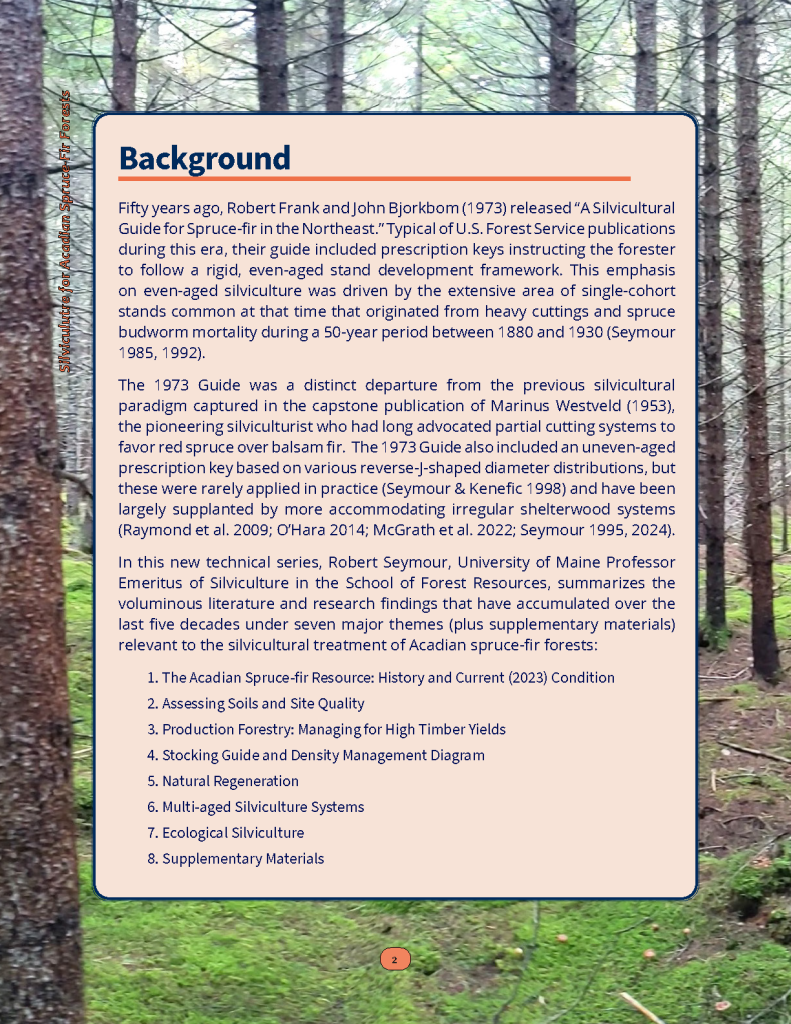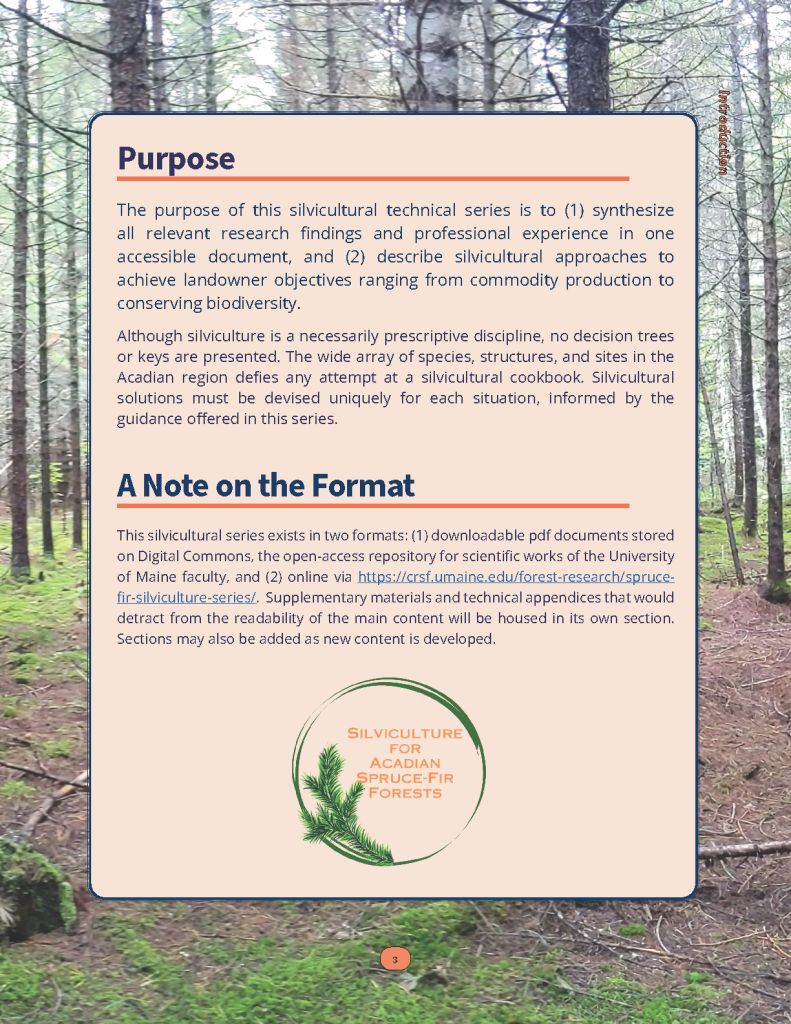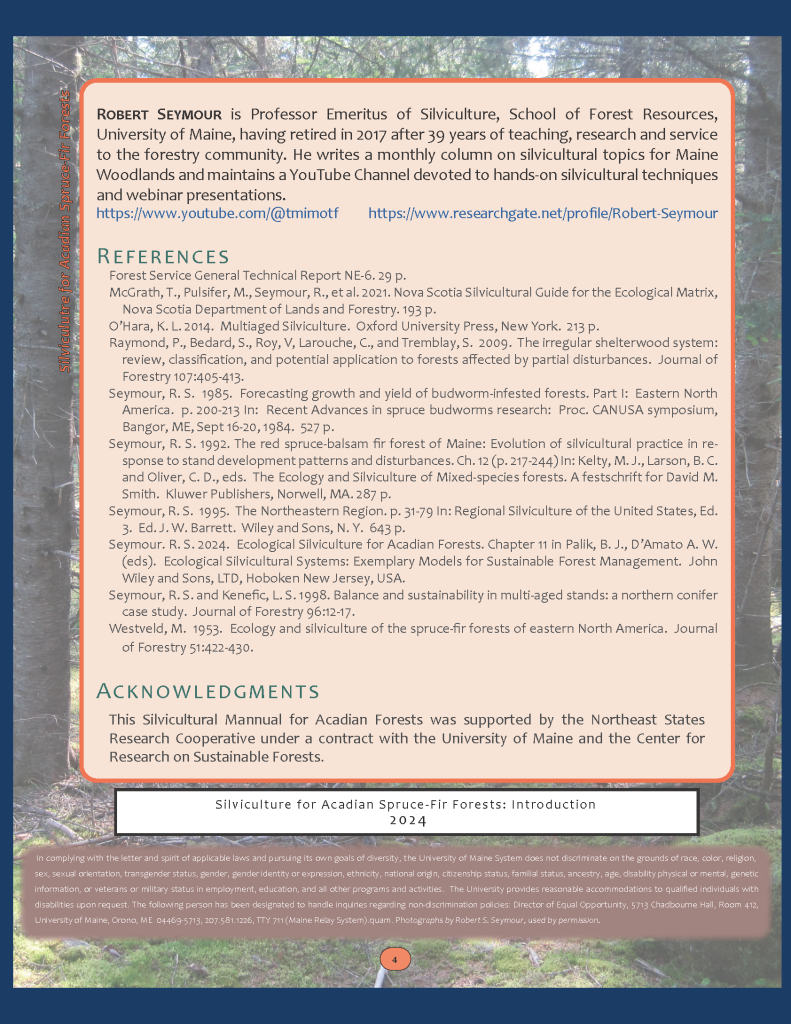Silviculture for Acadian Spruce-Fir Forests
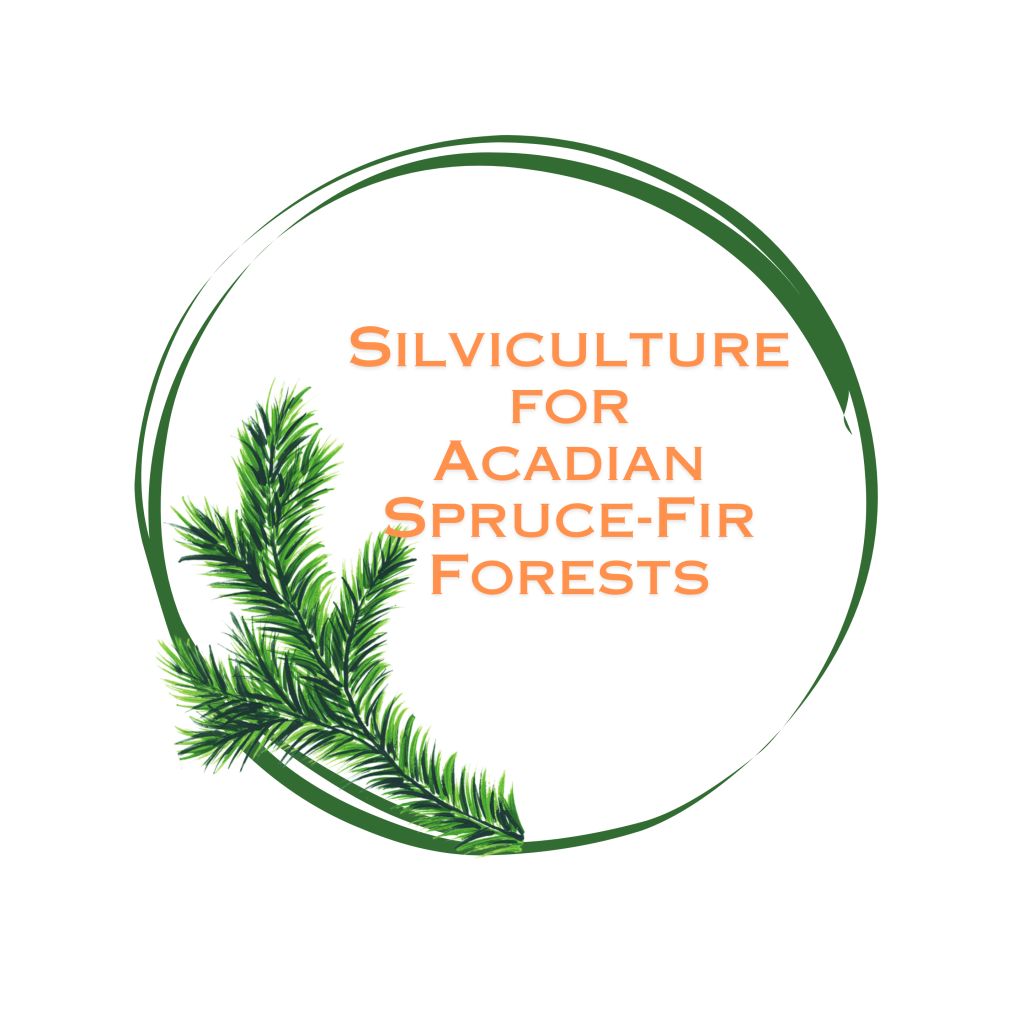
In this new technical series, Robert Seymour, University of Maine Professor Emeritus of Silviculture in the School of Forest Resources, summarizes the voluminous literature and research findings that have accumulated over the last five decades under seven major themes (plus supplementary materials) relevant to the silvicultural treatment of Acadian spruce-fir forests.
Fifty years ago, Robert Frank and John Bjorkbom (1973) released “A Silvicultural Guide for Spruce-fir in the Northeast.” Typical of U.S. Forest Service publications during this era, their guide included prescription keys instructing the forester to follow a rigid, even-aged stand development framework. This emphasis on even-aged silviculture was driven by the extensive area of single-cohort stands common at that time that originated from heavy cuttings and spruce budworm mortality during a 50-year period between 1880 and 1930 (Seymour 1985, 1992).
Introduction
The purpose of this silvicultural technical series is to (1) synthesize
all relevant research findings and professional experience in one
accessible document, and (2) describe silvicultural approaches to
achieve landowner objectives ranging from commodity production to
conserving biodiversity.
Individual Series PDFs
Series Introduction (pdf)
